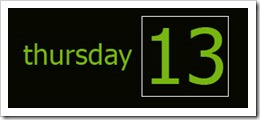Dragons were a popular subject with scholars, especially Victorian ones. They took on the task of cataloguing dragons.
The categories are as follows:
1. The Wyvern:
The name orginates from the Saxon word wivere or serpent. Its large body coiled, it had eagle’s legs and huge wings. Feared for its vicious nature and the pestilence it carried to northern Europe, Greece and Ethiopia.
2. The Amphiptere:
A legless, winged serpent found along the banks of the Nile and in Arabia. They are known to guard frankincense bearing trees, causing a threat to those who wished to harvest the resin.
3. The Heraldic Dragon:
Widespread and formidable, this dragon has massive fangs, four clawed legs and a ridge of sharp spines that stretch from nose to stinging tail.
4. The Guivre:
Wingless and legless, it has a massive dragon head, horns and a beard. They live in forests and wells and near water.
5. The Lindworm:
Has a serpentine body with one pair of legs. It is flightless
6. Cave Dweller:
Dragons like the dark, coldness of caves. They were private and easily defended. Caves close to towns (and food) are best.
7. Mountain Predators:
The elevation of mountains allows a dragon to spy on their prey and swoop down without warning. Their inaccessibility offers safety.
8. Aquatic Denizens:
These dragons live in seas, rivers and lakes and dine on fish and unlucky fishermen and sailors. The water allows them to approach towns and food sources undetected.
9. Swamp Beasts:
They live in marshes and swamps, some of which are rumored to be bottomless. The swamps are cold during the summer and don’t freeze in winter.
10. Celestial Guardians:
These dragons protected the heavens and also the mansions of the gods. These dragons have five claws instead of the normal four.
11. Treasure Keepers:
Subterranean dragons are responsible for all the precious jewels and metals buried in the earth. Each of these dragons owned a pearl, which reputably multiplied whatever it touched.
12. Weathermakers:
These spiritual dragons governed the wind, clouds and rain. They floated across the sky and the locals took care to appease them in case they took offence and created bad weather.
13. River Lords:
Earth dragons determined the course of the rivers. They regulated their flow and maintained their banks. Every river in China had an earth dragon that controlled the waters.
Source: The Enchanted World: Dragons
Which dragon would you prefer to meet?





That’s really cool. I haven’t heard of most of those terms. Interesting to know though.
Mary, I hadn’t heard of most of them either. It got the mind ticking over with possibilities.
Love the jargon dragon terms – Guivre is a new one on me!
It’s amazing at how much thoughtful research was done on dragons.
It’s hard to believe they weren’t real considering so much attention and study directed towards them.
Yes, especially during Victorian times. I find it fascinating.
Thanks for the post. I’m a big fan of dragons. I think I have been since I discovered Pern.
http://otherworlddiner.blogspot.com/2015/11/writing-and-looking-for-ideas-check-out.html
I’m a dragon fan too, and have been doing lots of reading since I’m writing a few dragon tales.
I learned a lot from this list. Thanks.
My work is done then. :-)
Wow, what a lot of interesting stuff. I would like to meet a River Dragon, I think. If I must meet a dragon. I had no idea there was so much dragon lore.
I’ve just written a romance about a river dragon. We have water/river dragons in New Zealand.
Cool, fun topic! My T13
Thanks, Heather.
So many types of dragons! Love it. I’d rather non-serpent looking ones. Other than that I’m good :D